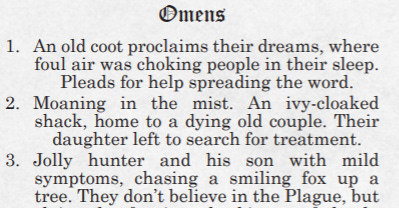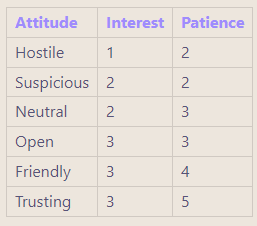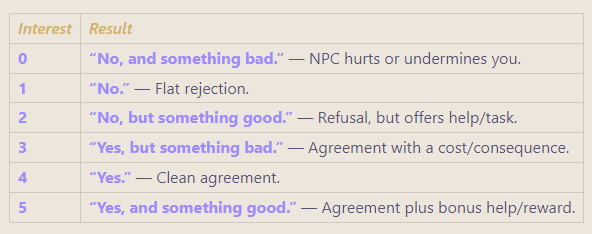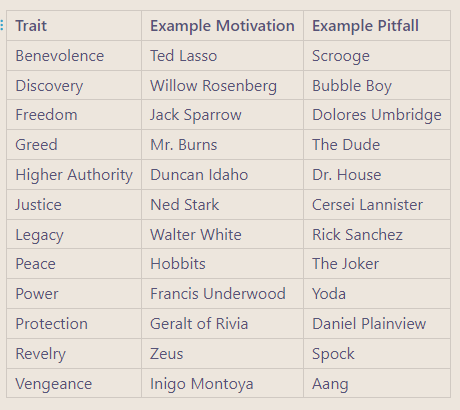HexCrawling: Worldbuilding Through Travel …and Other Stuff..
Trying to “explore” Hexcrawls, Nemeses, and Negotiations
I’ve never been successful at running a Hex Crawl. I loved the idea, but they were never fun….
Recently I had the chance to watch Quinn’s Quests review of Mythic Bastionland. And in that video he pointed towards Mystic Art’s great video on Hex Crawls. Let’s dig in.
🗺️ Map Creation
Before anything can be discovered, it must be placed — and Mythic Bastionland lays down a killer foundation for exploration by designing the world itself with intent (and its fast!).
Here’s how the game sets the stage:
The map is built on a 12x12 hexagonal grid, representing a realm loosely ruled by a Seat of Power.
Each hex covers roughly 3 miles - enough to see from one into the next. This is huge. It means players have immediate terrain cues like bogs, ruins, or mountains in nearby hexes, allowing them to make actual strategic travel choices.
Terrain comes in clusters - d12 hexes of the same type - which gives the land natural shape and texture. There are tables to roll to help create your map.
Barriers (hidden) - cliffs, mountain ridges. These block travel in about 1 in 6 hexes, making paths and decisions feel earned. A river usually also exists throughout the realm that can be sailed/traveled on.
Landmarks (hidden) - specific areas on the map: Dwellings, Monuments, Hazards, Curses, Ruins (3-4 of each, totally 15-20 landmarks).
Four major Holdings (castles, towns, temples) anchor the realm. One is the central Seat of Power (place near the center). The others are spaced away and usually held by NPCs and the populations of the realm.
Last but not least, you secretly place 6 Myths into the world……
Quinn’s used HexKit to make his maps.
Exploration = Puzzle, Not Lottery
The best hex crawls feel like unraveling a mystery, not flipping a random encounter table.
That’s where Mythic Bastionland’s core innovation comes in: Myths.
Each realm is seeded with six Myths, placed in distant or hard-to-reach hexes. These aren’t just bosses or plots. They’re epic, half-true legends that slowly become real.
The GM knows where each Myth originates.
Players don’t — they have to find them through clues, Seers, strange dreams, and whispered tales.
To start the game the GM, via the Seat of Power, gives the players the first Omen of each Myth (or maybe just a few). This usually gets them going in a direction.
As you explore hexes you can discover a new Omen (usually one related to the closes Myth).
Think of Omens as story beats. They’re not just flavor. They escalate the Myth.
One day you hear of a lost temple. Next week, the temple spews out plague. Wait too long? It’s not a ruin anymore — it’s the throne of a new god.
And here’s the kicker: players can’t predict when the next Omen hits. It’s around a 50% chance per hex (Wilderness Hex) they travel through. This creates a pulsing, unpredictable pressure.
Informed Choices = Actual Gameplay
A hex crawl without information is just a guessing game. Players should never be blindfolded and told to “pick a direction.”
Because the hexes in Mythic Bastionland are small and scoped like sightlines, players can always see into nearby hexes, which transforms every travel choice into a deliberate act.
“Do we head toward the forested ridge, or check out that crumbling tower to the east?” They know the terrain. They see the possibilities.
Travel is supposed to becomes tactical. Movement should become meaningful.
My understanding is that when you enter a Hex you make a Wildness Roll with a d6.
1: Encounter a RANDOM Omen
2-3: Encounter an Omen from the nearest Myth
4-6: Encounter the Hex’ Landmark (if there is one there)
Landmarks are supposed to be engaging narrative breadcrumbs:
Dwellings: Hermits, weirdos, lost families.
Sanctums: The homes of Seers — rare NPCs who know things you need to know (but hate telling you).
Monuments: Places of inspiration where players can restore Spirit.
Hazards & Curses: Challenges or blights that require clever problem-solving.
Ruins: Echoes of past Myths, which might return.
Each type gives players a reason to explore. Some landmarks directly point toward Myths. Others offer rest, aid, or tantalizing lore.
And because they’re randomly discovered (on a 4–6 during travel rolls), players never know what they’ll find, but they always know there’s something out there.
Even though players can see into nearby hexes… they can’t see Barriers or Landmarks until they enter a hex.
To me this might seem like a slight disconnect. The tiles are 3 miles so that you can see what’s coming, but a lot of what’s coming is secret. Is it the GM’s job to subtly hint at the possible?
Is this a problem? or is it overcome by the pacing….
Small Hexes Keep the Game Moving
Let’s be honest: 24-mile hexes are too clunky.
Mythic Bastionland uses “Hecksleagues” - 3-mile hexes - and it’s great.
The day is broken up into 3 phases: in essence - Morning, Afternoon, Evening. You can perform a move during each of these, and the distances can vary based on the terrain.
Road hex? 1 hour. (don’t do Wilderness rolls on these)
Wilderness hex? 4 hours.
Barrier attempt? an entire Phase
A day of travel always feels like you got somewhere, and you might see a LOT.
This system keeps the pace snappy, clear, and satisfying. You get that juicy dopamine hit of “we made it” multiple times per session.
Also…every step could fire off another Omen!
Myths as Timers, Not Just Lore
Every Myth contains six Omens, each a scene or consequence tied to that looming force. They get worse…. Always.
Don’t deal with the monstrous regent in the north? Eventually, your queen must marry him.
Ignore the festering ruins? The land around them warps and withers.
Miss your window? The sky itself might become “a rippling ceiling of skulls.”
These aren’t theoretical stakes. They’re real. And the players feel it.
Resolve a Myth, and the Knights involved gain Glory. A big deal. But every resolution means a new Myth appears next “Season”.
This loop of escalation and resolution keeps the world alive. Dangerous. Urgent.
These Myths are very abstract in nature. This makes the game feel narrative, and puts it a bit more into the “shared storytelling” category of a game. Don’t expect a 5-room dungeon with a typical escalation….but that doesn’t mean you can’t build it that way!
Resources That Hurt to Lose
In most games, damage is just hit points. In Mythic Bastionland, your three Virtues: Vigour, Clarity, and Spirit. They’re your life, mind, and soul.
Lose Clarity? You're confused and vulnerable.
Lose Spirit? You're shaken and despondent.
Lose Vigour? You’re weak - and maybe dying.
In typical hex crawls the major resource you should be worried about are usually generic “supplies”. Like food…maybe some nebulous thing like exhaustion.
In Mythic you lose Vigour, Clarity, and Spirt. And it can happen from all sorts of reasons, both mechanically and thematically. Also…these virtues are your “skills”. You are supposed to roll under them for checks.!!
And recovery? That’s a whole other challenge.
Clarity needs a Seer’s wisdom.
Spirit calls for emotional restoration — celebration, beauty, ritual.
Vigour might demand rest in a safe haven.
It’s resource management as story fuel.
High Stakes + Time Pressure = Real Drama
Time moves forward in Seasons and Ages.
If players drag their feet, the world changes:
Towns fall.
Rulers die.
Omens become facts.
And when one Myth ends, another arrives. There’s always something dark on the edge of the map.
This creates constant urgency. Players are never quite safe. And that’s what makes the victories feel earned.
The Omens and Myths cause the world to change and shift. Things are evolving.
Final Thought: Hex Crawls Done Right Are Adventures
A good hex crawl isn’t filler.
It’s a game. A puzzle. A survival story. A slow march into the unknown.
So what can we take away from this game, and these videos:
Simple Map, Rich with Seeds
Use a minimalist map that clearly shows where players can go. Seed it with Myths/Quests, and provide players with initial breadcrumbs to follow.Escalating Myths
Each Myth (or major Quest) should be built from smaller, randomly encountered events—omens, story beats, or encounters—that escalate tension and investment (roughly six, cause it’s a timer).Visible, but Uncertain
Let players spot interesting features on the map or in descriptions, but still require rolls to discover or engage with the hexes fully. Mystery adds depth.Fast-Paced Travel
Move quickly through hexes. Some locations should be quick, others dramatic—but keep the momentum. Player’s choose paths because they know how quickly they can move. Exploration should feel dynamic and alive.Myths as Timers
Treat Myths/Quests like clocks—timers that count down toward resolution or consequence. These can be abstracted if needed, but always ticking.Meaningful, Not Mundane Resources
Avoid generic supplies and exhaustion mechanics. Replace them with resource systems that feel personal, narrative, and tied to player choices.
Wait…..I want to talk about more stuff!
So the reason I’m talking about Hexcrawls, is because I want to build out a game for some buddies…but I also want to explore some other things. So, let’s talk about the Nemesis system from Middle-earth: Shadow of War.
I want to first point out, that Sensei Suplex thought of how he’d integrate this into his game.
Let’s explore how it works in the video game first.
Hierarchical Orc Army Structure
Each region in the game has its own orc hierarchy, consisting of:
Warchiefs (top tier): Powerful leaders who often require special conditions to challenge.
Captains (mid-tier): These are the most commonly encountered named enemies.
Grunts (bottom tier): Regular unnamed orcs who can potentially be promoted.
Each of these orcs has:
A name, title, and appearance
A personality, voice, and quirks
A set of strengths (like immune to ranged attacks) and weaknesses (like terrified of fire)
A faction and rank in the army
The game dynamically generates these traits, ensuring no two enemies are exactly alike.
Emergent Promotions & Deaths
The orc army is alive and constantly evolving, even when you're not interacting directly:
If you kill a Warchief, a new Captain may rise to fill that role.
Orcs hold duels, feasts, executions, and ambushes, which can result in promotions or deaths.
You can intervene in these events to shift power dynamics. (you might have an alliance or dominate certain orcs)
This makes the world feel reactive and strategic, where your decisions influence the entire region’s balance of power.
Intel and Targeting
To effectively fight high-ranking orcs, you must gather intel:
Intel can be found on weak orcs, maps, or through interrogating enemies.
Learning an orc’s weaknesses lets you exploit them (e.g., use fire against an orc afraid of it).
Some traits are hidden until revealed through intel or combat.
This adds a strategic prep phase to boss fights, encouraging recon before engaging.
This might dove-tail into the Draw Steel Negotiation System…..keep reading....
Domination and Army Building (Shadow of War)
In Shadow of War, the system was expanded significantly:
You can dominate orcs and turn them to your side.
Domination unlocks a layer of tactical army-building, where you assign dominated captains as spies, bodyguards, or assault leaders.
Orcs can betray you, fight alongside you in fort sieges, or die in your service—creating long-term, narrative-rich relationships.
The player effectively becomes a rival Warchief, using the Nemesis system to build their own hierarchy.
Fortress Sieges (Shadow of War)
The culmination of the system:
You attack or defend fortresses, using your recruited orcs.
Each fortress is controlled by a fort overlord and protected by captains.
You assign your own captains to lead parts of the siege—adding stakes to their survival and success.
This was the endgame loop: conquer regions, defend them from rival armies, and maintain loyalty.
Persistent Memory & Dynamic Dialogue
The game really introduced concepts of the Orcs learning who you are, and being effected by what you did to them…but we are now going to talk about TTRPGs…so this is second nature to us, and it’s in anyway innovative.
Final Thought: Nemesis system
Structure
Use simple reference tables to build enemy hierarchies—like a 1-2-4 or 1-2-3 pyramid. This lets you create a pool of six enemies that align with the six Omens, providing a mirrored structure to escalate conflict and track progression. (Now instead of 6 Myths maybe I could have 3 Myths and 3 Armies? or some mixing of it?)Promotions
Enemy promotions should only happen when they’re meaningful to the players—like if a previously defeated foe returns with a higher rank. A quick roll or trigger could determine if a known adversary has climbed the ranks. Otherwise, skip it.Intel
This is where it gets exciting. Tying the Draw Steel Negotiation system into combat outcomes creates interesting choices. Sparing enemies can give players intel that:Reveals locations of Landmarks (bypassing Hex Wilderness Rolls)
Triggers Omens
Creates leverage in future Negotiations.
And it keeps those enemies alive in the world—potentially returning later…..changed.
Domination
Yes. Just yes. Let players build a small force. If they can send agents to pursue Myths or uncover Omens, it opens the door for dynamic world events to ripple back to them. A low-maintenance system here could go a long way.Fortress Siege
Cool in theory, but not the right fit for this game—at least not now.
STILL GOING! Negotiation Time
Designed for DMs running high-stakes conversations in D&D, this system gives mechanical clarity to social encounters, turning vague terms like "friendly" or "hostile" into dynamic, trackable stats. It supports meaningful roleplay while easing pressure on the DM (theoretically…haven’t tried it).
Shout out to Matthew Perkins for his video on this subject.
When to Use This System
Use the Negotiation Rules only when:
The conversation is high-stakes.
Players have a plausible request.
make them write it down…
The NPC is open to negotiation but not immediately agreeable.
You're looking to stay in character, not change the NPC’s nature.
Not for basic social checks.
NPC Stats: Interest & Patience
At the start, the DM sets two stats:
Interest (0–5):
How much the NPC wants to grant the request.Goes up/down based on arguments.
5 = automatic agreement.
Patience (0–5):
How long the NPC is willing to keep talking.Only goes down over time.
0 = conversation ends and NPC gives a final offer based on current Interest.
Negotiation Outcomes (Based on Interest Level)
DMs can improvise these or prep outcome notes in advance.
NPC Personality: Motivations & Pitfalls
The game introduces Motivations & Pitfalls. Matthew Perkins feels that 3 Motivations and 2 Pitfalls are the sweet spot.
Motivations = values NPC wants to act on.
Pitfalls = values the NPC would be insulted by.
Player Actions During Negotiation
Players now do all the work. They have actions they can choose from:
Get a Read on the NPC
In this scenario they make an Insight check, or the equivalent in your game.
Roll outcomes (on a d20, but I think they use 2d6 in their game?):
≤11 = -1 Patience
12–16 = The NPC is hard to read
17+ = Learn one Motivation or Pitfall
Make an Argument
Based on what they say, the GM is going to determine if they need to roll Persuasion or Deception (or the equivalent in the game you play). The GM might also determine if they think that the player is lying.
DM places the argument into one of four categories that they think the player’s are appealing to:
Appeal to Motivation outcomes:
≤11 = -1 Patience
12–16 = +1 Interest & -1 Patient
17+ = +1 Interest
Appeal to Pitfall outcome:
Automatic = -1 Interest & -1 Patience
Appeal to Neither Motivation or Pitfall outcomes:
≤11 = -1 Interest & -1 Patience
12–16 = -1 Patience
17+ = +1 Interest & -1 Patience
Tell a Lie:
Deception check instead of Persuasion or Intimidation on any of the above tables. If you fail to increase Interest you are caught in the lie. In addition to any decreases you also get an extra -1 Interest
Accept an Offer
Ends negotiation.
NPC gives offer based on current Interest level.
Players may accept or refuse.
If the NPC runs out of Patience before a player Accepts an Offer I believe that the Negotiation is over.
Tracker
I want to also give a shoutout to Perkins for having this great cheat sheet for running this system.
Final Final Conclusion?
Ok. I think that’s it. I’m trying to blend all of the above to be something I can use regardless of the system running. Currently I’m debating on doing a short Daggerheart campaign (8 sessions), and using this for the World Building/Negotiation system involved. I’ll write more if I start to cobble this all together.








The emoji usage is very almost AI like